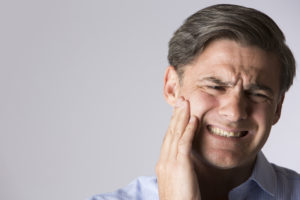 Signs and Symptoms: While people may notice their clenching and grinding habits, they may not be aware that its causing headaches, teeth damage and jaw pain that can progressively can get worse. A sudden onset of signs and symptoms include muscle pain, stiffness, limited range of motion in jaws, pain on opening the jaws, headaches, fullness in the ear, pain on pushing on the muscle and joints.
Signs and Symptoms: While people may notice their clenching and grinding habits, they may not be aware that its causing headaches, teeth damage and jaw pain that can progressively can get worse. A sudden onset of signs and symptoms include muscle pain, stiffness, limited range of motion in jaws, pain on opening the jaws, headaches, fullness in the ear, pain on pushing on the muscle and joints.
Management
1. Soft Diet – Avoid hard foods (e.g hard meat, junk food, chewing gum). Hard foods delay the healing process. A soft diet will allow your chewing muscles to rest.
2. Moist Heat – Use a HOT WATER BOTTLE or roll a bath towel lengthwise, wet it, fold and place in a plastic bag. Put in a microwave and heat on high for 5 mins. Carefully remove, and cover with additional bags to prevent burning. Put around your jaws or neck or anywhere that is sore. Keep on for 20 min. Do this 3 times a day. The benefits are reduction of pain, vasodilatation and increase in blood circulation in your muscles and joints.
3. Medications – Medications are to be taken by your doctor as directed. Ibuprofen (like MOTRIN or ADVIL) has anti-inflammatory properties and is great for muscle and joint pain relief. If you are able to take Ibuprofen, take 400-600 mg every 6 hours for a few days until you notice the pain getting better. Muscle relaxers can also be prescribed by your Dentist and can often cause drowsiness. Pain meds and muscle relaxants are usually given for short term.
4. Splint Therapy – Occlusal splint therapy is a non invasive method of managing pain. Oral appliances such as occlusal guards or night guards are used to help muscle relaxation and decrease the damaging effects of grinding and clenching at night. They are similar to orthodontic retainers but are not used to move teeth. They are made out of thick resin and used primarily at night to help stabilize the jaws. They can also be worn during the day.
5. Stress Reduction – Stress may increase muscle tension and affect sleep. Try to reduce daily stress and start to take notice of when you are clenching or grinding your teeth during the day at stressful moments. Make sure you breathe deeply in through the nose and out though the mouth. Keep your posture erect to help relieve muscles.
6. Muscle Exercises – Relaxing and stretching your jaw muscles will significantly help relieve pain and train them to be in a normal healthy
position. If you have acute pain, wait until you can function better before doing hinge exercises.
Tongue Up
– Rest tongue gently in “N” position at roof of mouth. Saying N will help you find the position. Do not touch upper teeth.
– Do not press or hold tongue, your tongue should naturally be in this position. This helps to keep the teeth apart and relax the jaw muscles.
– Practice this every night before going to bed to help reduce grinding and clenching habits
Teeth Apart
– Keep teeth slightly apart at all times except when chewing and talking
– Lip relaxed
– Breathe through nose if possible
Hinge Exercise
– Place the of tongue on the middle of the roof of mouth (further than “N” position)
– Open and close mouth 1 to 2 finger width apart smoothly and rhythmically.
– Do not touch teeth with tongue
– Do 5 sets, 5 times a day. Try it in while in traffic, sitting at your desk and before going to bed
– You can also do this exercise and hold the potion for 5 seconds each time to help relieve muscle soreness.
These muscle exercises will help train your jaw muscles to stay relax and relieve tightness. Overtime reduces with clenching and grinding as well.